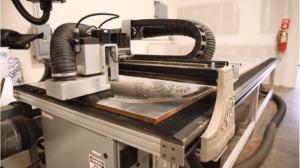The construction industry is in the thick of a thrilling transformation, contractors around the world are transitioning their operations to integrate new technologies, ideas, and opportunities. While it is still unclear what the political and economic landscapes have in store for the year ahead, one thing is certain — building contractors will not be facing any shortages in work or opportunities for business growth in 2019.
Keeping tabs on the latest industry trends and technologies will be crucial for success in the coming year. Here are eight key trends we’re watching this year and what their impact on the construction in 2019 and beyond might be.
1. The ongoing construction labour saga
The skilled labour shortage in construction has been one of the biggest challenges facing contractors for nearly a decade now. Following the recession from 2008 through 2012, when layoffs and lean operations forced many trained construction workers to take work in other industries, contractors have had a hard time convincing them to come back. Coupled with attrition from a significant number of retirements among older generations, the industry has struggled to maintain skilled workforces. And younger generations have spurned construction jobs in favor of other more tech-focused industries. Construction industry associations and many forward-thinking contractors have focused on new recruitment methods over the past couple of years. Among these: revamping degree programs at tech and trade schools, campaigns to attract more women and minorities to prominent construction roles and appealing to younger generations with a host of new construction technology opportunities. Even with these initiatives, the numbers are nowhere near where contractors would like them to be. This year, we’ll likely see even more of these initiatives, along with a united industry-wide push to sell construction as an industry that young professionals can make their mark in.
2. Construction business intelligence-driven by big data
The future of construction is data analytics. Contractors are already beginning to harness the power of information with modern technologies like cloud-based software and detailed data collection and reporting solutions. But by integrating data throughout the organization and across projects, combined with new, powerful data analytic solutions being brought to the market, construction firms are on the verge of a revolution that will achieve true business intelligence to forecast and future-proof their business. These technologies allow contractor to collect, parse and evaluate far greater amounts of construction data than ever before, and all quite easily. Leading construction business intelligence tools are not only as simple to use as dragging and dropping data into buckets, they are integrated into larger construction ERP solutions, making it easy to analyze virtually any data desired.
3. The rise of more digital contractors
Contractors large and small are realising it is time to adapt or perish. And that means 2019 could see a huge wave of digitization and innovation among construction firms. With cloud computing emerging as the preferred vehicle for business operations worldwide, construction companies are upgrading their business management and operations software systems accordingly. With integrated, cloud-based construction software platforms providing the vehicle for contractors to use the same sets of data across the back office, field and entire project teams, departmental siloes are being torn down and projects are being run in real time, with real, actionable data. This digitization is also eliminating paper and manual processes throughout, saving time, mitigating risks and errors and improving productivity and profitability.
4. More mobile construction work
As mobile devices continue to advance, and we use them more and more in our daily lives, their application in construction is also growing. Thanks to the cloud and intuitive construction apps, workers in the field can access and collect data on their laptops, smartphones, tablets or even wearable devices. Intuitive construction-specific apps also allow them to analyze data right from the jobsite, providing an up-to-the-minute look at the true health and productivity of construction projects. By utilizing the cloud to collect and share data, mobile devices will continue to have a dramatic impact on construction collaboration and productivity in 2019.

5. BIM, VR and AI changing building design
BIM programs, which use 3D modeling to streamline planning and design of buildings and infrastructure are already a requirement of contractors in the UK and are now gaining steam in North America, as more contractors are adopting BIM into their operations. Now, with 4D and 5D BIM technology being developed and other innovations like the use of augmented reality devices and AI technology to visualize projects from the ground up before construction even begins, construction is moving away from paper and CAD programs and into a new realm where possibilities and new ideas are virtually endless.
6. Pre-fabricated and modular construction to boom
Pre-fabrication of materials, parts and even buildings has been a practice that has been deployed for more than a decade now — especially among mechanical and electrical contractors. But the last couple of years has seen a shift in thinking across all construction disciplines as they embraced bringing work in house. Expect this trend to not just continue, but potentially explode in 2019 as more and more contractors are transforming into design-build firms with modular construction or pre-fab facilities that allow them to begin building in a central location. Because construction of modular buildings can occur simultaneously with site and foundation work at the jobsite, projects can be completed 30% to 50% sooner than traditional construction. Modular construction has many benefits, including reductions in material waste and allowing contractors to sidestep costly weather delays since most modular construction occurs inside a factory. Modular construction also provides greater flexibility for how buildings can be used, allowing them to be disassembled and relocated for new uses or repurposing of materials.
Take a Deepive Deepr – Read: Why Offsite Prefabrication is a Game Changer for Your Firm
7. Drones taking flight
Already many contractors are using drones in their daily work to provide visualization of both work in progress and work remaining, collect data from the jobsite and provide key safety assessments. Drones and the data they collect are also being integrated into other construction technologies, like ERPs to facilitate further analysis of construction data and influence business intelligence and forecasting models. The initial success stories contractors have had with drones has made them one of the most sought-after technologies and 2019 may prove to be a big year for their growth. Multiple construction industry reports indicate the overall drone industry will develop into a multi-billion-dollar industry over the next decade, with estimates anywhere from $5 billion to $100 billion. And drones’ application in construction is huge.
8. Improved production with robotics
Along with modular construction, the use of robotics and automated smart machines are helping boost productivity and accuracy, while reducing overhead and waste. Robotics are being used for everything from bricklaying and foundation building to autonomous construction equipment on jobsites and 3D printing of materials used in both modular/onsite construction. By automating manual processes and reducing time and labor needed on construction projects, contractors are able to deliver projects faster and more efficiently, while offsetting the loss of skilled laborers.
If you would like to read more articles like this then please click here.
The post 2019 Construction Trends – eight topics to watch in the year ahead appeared first on UK Construction Online.

Walang komento:
Mag-post ng isang Komento